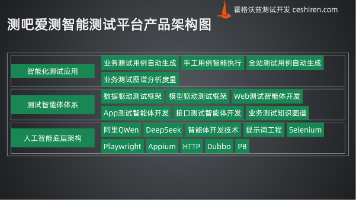32.模型评估:如何判断AI学得好不好
本文介绍了机器学习模型评估的核心概念和方法。通过类比学生考试,解释了模型评估如何判断AI的真实表现。主要内容包括:1)模型评估的基本流程和重要性,防止过拟合;2)分类模型的评估指标(准确率、精确率、召回率、F1分数);3)回归模型的评估指标(MSE、RMSE、MAE、R²);4)实战演示如何通过代码实现分类模型评估。文中强调,模型评估是确保AI系统可靠性的关键步骤,需要根据具体场景选择合适的评估指
模型评估:如何判断AI学得好不好
🎯 前言:AI的期末考试来了!
还记得学生时代最紧张的时刻吗?没错,就是期末考试!考试成绩决定了你是被爸妈奖励还是被混合双打。机器学习模型也是如此,训练完成后,我们需要给它来一场"期末考试"——这就是模型评估。
想象一下,你花了几个小时训练出一个模型,它在训练数据上表现得像个学霸,准确率高达99%!你兴奋地跑去告诉老板:"我们的AI已经超越人类了!"结果老板拿来真实数据一测试,准确率掉到了30%…这就像是一个学生在家里做作业门门满分,一到考场就变成学渣。
这种情况在机器学习中有个专业术语叫"过拟合",但我更喜欢称之为"应试教育综合症"——只会做练习题,不会举一反三。今天我们就来学习如何给AI模型来一场公平、全面的考试,看看它到底是真学霸还是假把式!
📚 目录
- 什么是模型评估?
- 评估指标大家族
- 分类模型的成绩单
- 回归模型的评分标准
- 交叉验证:多次考试更可靠
- 混淆矩阵:错误分析专家
- ROC曲线:模型的全面体检
- 实战项目:垃圾邮件分类器评估
- 进阶技巧:让评估更专业
- 常见问题与解决方案
- 总结与思考题
🧠 什么是模型评估?
基本概念
模型评估是衡量机器学习模型性能的过程。它帮助我们回答一个关键问题:模型是否能够在真实数据上表现良好?
就像学生考试一样,我们不能只看学生在练习题上的表现,还要看他们在真正考试中的发挥。模型评估就是给AI模型安排一场"期末考试",用它从未见过的数据来测试其真实能力。
为什么需要模型评估?
- 避免过拟合:模型可能在训练数据上表现很好,但在测试数据上却一塌糊涂。
- 选择最佳模型:通过比较不同模型的评估结果,找到最适合的那个。
- 优化模型:评估结果可以指导我们调整模型参数,提升性能。
- 建立信心:只有通过严格的评估,我们才能相信模型在实际应用中的表现。
评估的基本流程
# 模型评估的基本流程
import numpy as np
from sklearn.model_selection import train_test_split
from sklearn.linear_model import LogisticRegression
from sklearn.metrics import accuracy_score
# 1. 数据分割
X_train, X_test, y_train, y_test = train_test_split(X, y, test_size=0.2, random_state=42)
# 2. 模型训练
model = LogisticRegression()
model.fit(X_train, y_train)
# 3. 模型预测
y_pred = model.predict(X_test)
# 4. 评估结果
accuracy = accuracy_score(y_test, y_pred)
print(f"模型准确率: {accuracy:.4f}")
📊 评估指标大家族
评估指标就像是不同的考试科目,每个指标都从不同角度评估模型的能力。让我们来认识一下这个大家族的成员们:
分类问题的评估指标
1. 准确率(Accuracy)
准确率是最直观的指标,表示预测正确的样本数占总样本数的比例。
from sklearn.metrics import accuracy_score
# 计算准确率
accuracy = accuracy_score(y_true, y_pred)
print(f"准确率: {accuracy:.4f}")
# 手动计算
accuracy_manual = np.sum(y_true == y_pred) / len(y_true)
print(f"手动计算准确率: {accuracy_manual:.4f}")
使用场景:
- 各类样本数量相对均衡时
- 对所有类别的预测都同等重要
局限性:
- 在类别不平衡的情况下可能产生误导
- 无法反映各类别的具体表现
2. 精确率(Precision)
精确率回答的问题是:在所有预测为正类的样本中,真正为正类的比例是多少?
from sklearn.metrics import precision_score
# 二分类精确率
precision = precision_score(y_true, y_pred)
print(f"精确率: {precision:.4f}")
# 多分类精确率
precision_multi = precision_score(y_true, y_pred, average='weighted')
print(f"加权精确率: {precision_multi:.4f}")
应用场景:
- 垃圾邮件检测:避免误杀正常邮件
- 医疗诊断:避免误诊健康人为病人
- 金融风控:避免误判正常交易为欺诈
3. 召回率(Recall)
召回率回答的问题是:在所有真正为正类的样本中,被正确预测的比例是多少?
from sklearn.metrics import recall_score
# 二分类召回率
recall = recall_score(y_true, y_pred)
print(f"召回率: {recall:.4f}")
# 多分类召回率
recall_multi = recall_score(y_true, y_pred, average='weighted')
print(f"加权召回率: {recall_multi:.4f}")
应用场景:
- 疾病筛查:不能漏掉真正的病人
- 安全检查:不能漏掉危险品
- 欺诈检测:不能漏掉真正的欺诈行为
4. F1分数
F1分数是精确率和召回率的调和平均数,平衡了两者的重要性。
from sklearn.metrics import f1_score
# F1分数
f1 = f1_score(y_true, y_pred)
print(f"F1分数: {f1:.4f}")
# 手动计算F1分数
precision = precision_score(y_true, y_pred)
recall = recall_score(y_true, y_pred)
f1_manual = 2 * (precision * recall) / (precision + recall)
print(f"手动计算F1分数: {f1_manual:.4f}")
回归问题的评估指标
1. 均方误差(MSE)
MSE衡量预测值与真实值之间差异的平方的平均值。
from sklearn.metrics import mean_squared_error
import numpy as np
# 计算MSE
mse = mean_squared_error(y_true, y_pred)
print(f"均方误差: {mse:.4f}")
# 手动计算MSE
mse_manual = np.mean((y_true - y_pred) ** 2)
print(f"手动计算MSE: {mse_manual:.4f}")
2. 均方根误差(RMSE)
RMSE是MSE的平方根,单位与原始数据相同,更容易解释。
# 计算RMSE
rmse = np.sqrt(mean_squared_error(y_true, y_pred))
print(f"均方根误差: {rmse:.4f}")
3. 平均绝对误差(MAE)
MAE是预测值与真实值之间绝对差异的平均值。
from sklearn.metrics import mean_absolute_error
# 计算MAE
mae = mean_absolute_error(y_true, y_pred)
print(f"平均绝对误差: {mae:.4f}")
4. R²决定系数
R²表示模型解释的方差占总方差的比例。
from sklearn.metrics import r2_score
# 计算R²
r2 = r2_score(y_true, y_pred)
print(f"R²决定系数: {r2:.4f}")
🔍 分类模型的成绩单
让我们通过一个完整的分类项目来演示如何评估分类模型:
数据准备
import pandas as pd
import numpy as np
from sklearn.datasets import make_classification
from sklearn.model_selection import train_test_split
from sklearn.linear_model import LogisticRegression
from sklearn.ensemble import RandomForestClassifier
from sklearn.svm import SVC
from sklearn.metrics import classification_report, confusion_matrix
# 创建模拟数据集
X, y = make_classification(n_samples=1000, n_features=20, n_classes=2,
n_informative=15, n_redundant=5, random_state=42)
# 分割数据
X_train, X_test, y_train, y_test = train_test_split(X, y, test_size=0.2, random_state=42)
print(f"训练集大小: {X_train.shape[0]}")
print(f"测试集大小: {X_test.shape[0]}")
print(f"类别分布: {np.bincount(y)}")
模型训练与评估
# 训练多个模型
models = {
'Logistic Regression': LogisticRegression(random_state=42),
'Random Forest': RandomForestClassifier(random_state=42),
'SVM': SVC(random_state=42)
}
results = {}
for name, model in models.items():
# 训练模型
model.fit(X_train, y_train)
# 预测
y_pred = model.predict(X_test)
# 评估
results[name] = {
'accuracy': accuracy_score(y_test, y_pred),
'precision': precision_score(y_test, y_pred),
'recall': recall_score(y_test, y_pred),
'f1': f1_score(y_test, y_pred)
}
# 结果展示
results_df = pd.DataFrame(results).T
print("模型评估结果:")
print(results_df.round(4))
详细评估报告
# 选择最佳模型进行详细评估
best_model = RandomForestClassifier(random_state=42)
best_model.fit(X_train, y_train)
y_pred = best_model.predict(X_test)
# 详细分类报告
print("详细分类报告:")
print(classification_report(y_test, y_pred))
# 混淆矩阵
print("\n混淆矩阵:")
cm = confusion_matrix(y_test, y_pred)
print(cm)
📈 回归模型的评分标准
完整的回归评估示例
from sklearn.datasets import make_regression
from sklearn.linear_model import LinearRegression
from sklearn.ensemble import RandomForestRegressor
from sklearn.svm import SVR
from sklearn.metrics import mean_squared_error, mean_absolute_error, r2_score
import matplotlib.pyplot as plt
# 创建回归数据集
X, y = make_regression(n_samples=1000, n_features=10, noise=0.1, random_state=42)
# 分割数据
X_train, X_test, y_train, y_test = train_test_split(X, y, test_size=0.2, random_state=42)
# 训练多个回归模型
regression_models = {
'Linear Regression': LinearRegression(),
'Random Forest': RandomForestRegressor(random_state=42),
'SVR': SVR()
}
regression_results = {}
for name, model in regression_models.items():
# 训练模型
model.fit(X_train, y_train)
# 预测
y_pred = model.predict(X_test)
# 评估
regression_results[name] = {
'MSE': mean_squared_error(y_test, y_pred),
'RMSE': np.sqrt(mean_squared_error(y_test, y_pred)),
'MAE': mean_absolute_error(y_test, y_pred),
'R²': r2_score(y_test, y_pred)
}
# 结果展示
regression_df = pd.DataFrame(regression_results).T
print("回归模型评估结果:")
print(regression_df.round(4))
残差分析
# 残差分析
best_regression_model = RandomForestRegressor(random_state=42)
best_regression_model.fit(X_train, y_train)
y_pred_reg = best_regression_model.predict(X_test)
# 计算残差
residuals = y_test - y_pred_reg
# 残差统计
print(f"残差均值: {np.mean(residuals):.4f}")
print(f"残差标准差: {np.std(residuals):.4f}")
print(f"残差最大值: {np.max(residuals):.4f}")
print(f"残差最小值: {np.min(residuals):.4f}")
🔄 交叉验证:多次考试更可靠
交叉验证就像是让学生参加多次考试,然后取平均分,这样能更准确地评估真实水平。
K折交叉验证
from sklearn.model_selection import cross_val_score, KFold
# 创建K折交叉验证器
kfold = KFold(n_splits=5, shuffle=True, random_state=42)
# 使用交叉验证评估模型
model = RandomForestClassifier(random_state=42)
cv_scores = cross_val_score(model, X, y, cv=kfold, scoring='accuracy')
print(f"交叉验证准确率: {cv_scores}")
print(f"平均准确率: {cv_scores.mean():.4f}")
print(f"标准差: {cv_scores.std():.4f}")
分层K折交叉验证
from sklearn.model_selection import StratifiedKFold
# 分层K折交叉验证(保持类别比例)
skfold = StratifiedKFold(n_splits=5, shuffle=True, random_state=42)
stratified_scores = cross_val_score(model, X, y, cv=skfold, scoring='accuracy')
print(f"分层交叉验证准确率: {stratified_scores}")
print(f"平均准确率: {stratified_scores.mean():.4f}")
print(f"标准差: {stratified_scores.std():.4f}")
留一交叉验证
from sklearn.model_selection import LeaveOneOut
# 留一交叉验证(适用于小数据集)
loo = LeaveOneOut()
loo_scores = cross_val_score(model, X[:100], y[:100], cv=loo, scoring='accuracy')
print(f"留一交叉验证准确率: {loo_scores.mean():.4f}")
🎯 混淆矩阵:错误分析专家
混淆矩阵是理解分类模型性能的强大工具,它能告诉我们模型在哪些类别上容易出错。
二分类混淆矩阵
from sklearn.metrics import confusion_matrix
import seaborn as sns
import matplotlib.pyplot as plt
# 计算混淆矩阵
cm = confusion_matrix(y_test, y_pred)
# 可视化混淆矩阵
plt.figure(figsize=(8, 6))
sns.heatmap(cm, annot=True, fmt='d', cmap='Blues',
xticklabels=['Predicted 0', 'Predicted 1'],
yticklabels=['Actual 0', 'Actual 1'])
plt.title('混淆矩阵')
plt.ylabel('实际类别')
plt.xlabel('预测类别')
plt.show()
# 从混淆矩阵计算各项指标
tn, fp, fn, tp = cm.ravel()
print(f"真负例 (TN): {tn}")
print(f"假正例 (FP): {fp}")
print(f"假负例 (FN): {fn}")
print(f"真正例 (TP): {tp}")
# 手动计算指标
accuracy = (tp + tn) / (tp + tn + fp + fn)
precision = tp / (tp + fp)
recall = tp / (tp + fn)
f1 = 2 * (precision * recall) / (precision + recall)
print(f"\n从混淆矩阵计算的指标:")
print(f"准确率: {accuracy:.4f}")
print(f"精确率: {precision:.4f}")
print(f"召回率: {recall:.4f}")
print(f"F1分数: {f1:.4f}")
多分类混淆矩阵
from sklearn.datasets import make_classification
# 创建多分类数据
X_multi, y_multi = make_classification(n_samples=1000, n_features=10,
n_classes=3, n_informative=8,
random_state=42)
X_train_multi, X_test_multi, y_train_multi, y_test_multi = train_test_split(
X_multi, y_multi, test_size=0.2, random_state=42)
# 训练多分类模型
multi_model = RandomForestClassifier(random_state=42)
multi_model.fit(X_train_multi, y_train_multi)
y_pred_multi = multi_model.predict(X_test_multi)
# 多分类混淆矩阵
cm_multi = confusion_matrix(y_test_multi, y_pred_multi)
# 可视化多分类混淆矩阵
plt.figure(figsize=(8, 6))
sns.heatmap(cm_multi, annot=True, fmt='d', cmap='Blues',
xticklabels=[f'Pred {i}' for i in range(3)],
yticklabels=[f'True {i}' for i in range(3)])
plt.title('多分类混淆矩阵')
plt.ylabel('实际类别')
plt.xlabel('预测类别')
plt.show()
📊 ROC曲线:模型的全面体检
ROC曲线是评估二分类模型性能的重要工具,它展示了在不同分类阈值下模型的表现。
ROC曲线绘制
from sklearn.metrics import roc_curve, auc, roc_auc_score
import matplotlib.pyplot as plt
# 获取预测概率
model_for_roc = RandomForestClassifier(random_state=42)
model_for_roc.fit(X_train, y_train)
y_proba = model_for_roc.predict_proba(X_test)[:, 1]
# 计算ROC曲线
fpr, tpr, thresholds = roc_curve(y_test, y_proba)
roc_auc = auc(fpr, tpr)
# 绘制ROC曲线
plt.figure(figsize=(8, 6))
plt.plot(fpr, tpr, color='darkorange', lw=2,
label=f'ROC curve (AUC = {roc_auc:.2f})')
plt.plot([0, 1], [0, 1], color='navy', lw=2, linestyle='--',
label='Random classifier')
plt.xlim([0.0, 1.0])
plt.ylim([0.0, 1.05])
plt.xlabel('假正例率 (FPR)')
plt.ylabel('真正例率 (TPR)')
plt.title('ROC曲线')
plt.legend(loc="lower right")
plt.grid(True)
plt.show()
print(f"AUC分数: {roc_auc:.4f}")
多模型ROC比较
# 比较多个模型的ROC曲线
models_for_roc = {
'Random Forest': RandomForestClassifier(random_state=42),
'Logistic Regression': LogisticRegression(random_state=42),
'SVM': SVC(probability=True, random_state=42)
}
plt.figure(figsize=(10, 8))
for name, model in models_for_roc.items():
# 训练模型
model.fit(X_train, y_train)
# 获取预测概率
y_proba = model.predict_proba(X_test)[:, 1]
# 计算ROC曲线
fpr, tpr, _ = roc_curve(y_test, y_proba)
roc_auc = auc(fpr, tpr)
# 绘制ROC曲线
plt.plot(fpr, tpr, lw=2, label=f'{name} (AUC = {roc_auc:.2f})')
plt.plot([0, 1], [0, 1], color='navy', lw=2, linestyle='--',
label='Random classifier')
plt.xlim([0.0, 1.0])
plt.ylim([0.0, 1.05])
plt.xlabel('假正例率 (FPR)')
plt.ylabel('真正例率 (TPR)')
plt.title('多模型ROC曲线比较')
plt.legend(loc="lower right")
plt.grid(True)
plt.show()
🚀 实战项目:垃圾邮件分类器评估
让我们通过一个完整的垃圾邮件分类项目来综合应用所有的评估技术:
数据准备和特征工程
from sklearn.feature_extraction.text import TfidfVectorizer
from sklearn.naive_bayes import MultinomialNB
from sklearn.pipeline import Pipeline
import pandas as pd
# 模拟垃圾邮件数据
emails = [
"Get rich quick! Buy now!",
"Meeting at 3pm tomorrow",
"FREE money! Click here!",
"Please review the attached document",
"You won $1000000! Claim now!",
"Team lunch next Friday",
"URGENT: Your account will be closed!",
"Project deadline reminder",
"Limited time offer! Act now!",
"Welcome to the team"
]
labels = [1, 0, 1, 0, 1, 0, 1, 0, 1, 0] # 1=垃圾邮件, 0=正常邮件
# 扩展数据集
emails_extended = emails * 100 # 扩展到1000个样本
labels_extended = labels * 100
# 添加一些噪声
np.random.seed(42)
for i in range(len(labels_extended)):
if np.random.random() < 0.1: # 10%的噪声
labels_extended[i] = 1 - labels_extended[i]
# 创建DataFrame
spam_df = pd.DataFrame({
'email': emails_extended,
'label': labels_extended
})
print(f"数据集大小: {len(spam_df)}")
print(f"垃圾邮件比例: {spam_df['label'].mean():.2f}")
建立评估管道
# 创建文本分类管道
text_pipeline = Pipeline([
('tfidf', TfidfVectorizer(max_features=1000, stop_words='english')),
('classifier', MultinomialNB())
])
# 分割数据
X_spam = spam_df['email']
y_spam = spam_df['label']
X_train_spam, X_test_spam, y_train_spam, y_test_spam = train_test_split(
X_spam, y_spam, test_size=0.2, random_state=42, stratify=y_spam)
# 训练模型
text_pipeline.fit(X_train_spam, y_train_spam)
# 预测
y_pred_spam = text_pipeline.predict(X_test_spam)
y_proba_spam = text_pipeline.predict_proba(X_test_spam)[:, 1]
综合评估报告
# 基础评估指标
print("=== 垃圾邮件分类器评估报告 ===")
print(f"准确率: {accuracy_score(y_test_spam, y_pred_spam):.4f}")
print(f"精确率: {precision_score(y_test_spam, y_pred_spam):.4f}")
print(f"召回率: {recall_score(y_test_spam, y_pred_spam):.4f}")
print(f"F1分数: {f1_score(y_test_spam, y_pred_spam):.4f}")
# 详细分类报告
print("\n=== 详细分类报告 ===")
print(classification_report(y_test_spam, y_pred_spam,
target_names=['正常邮件', '垃圾邮件']))
# 混淆矩阵
print("\n=== 混淆矩阵 ===")
cm_spam = confusion_matrix(y_test_spam, y_pred_spam)
print(cm_spam)
# ROC-AUC
roc_auc_spam = roc_auc_score(y_test_spam, y_proba_spam)
print(f"\nROC-AUC分数: {roc_auc_spam:.4f}")
# 交叉验证
cv_scores_spam = cross_val_score(text_pipeline, X_spam, y_spam,
cv=5, scoring='f1')
print(f"\n交叉验证F1分数: {cv_scores_spam.mean():.4f} (+/- {cv_scores_spam.std() * 2:.4f})")
🎯 进阶技巧:让评估更专业
1. 学习曲线分析
from sklearn.model_selection import learning_curve
# 绘制学习曲线
def plot_learning_curve(estimator, title, X, y, cv=None, n_jobs=None,
train_sizes=np.linspace(.1, 1.0, 5)):
plt.figure(figsize=(10, 6))
train_sizes, train_scores, test_scores = learning_curve(
estimator, X, y, cv=cv, n_jobs=n_jobs, train_sizes=train_sizes)
train_scores_mean = np.mean(train_scores, axis=1)
train_scores_std = np.std(train_scores, axis=1)
test_scores_mean = np.mean(test_scores, axis=1)
test_scores_std = np.std(test_scores, axis=1)
plt.grid()
plt.fill_between(train_sizes, train_scores_mean - train_scores_std,
train_scores_mean + train_scores_std, alpha=0.1, color="r")
plt.fill_between(train_sizes, test_scores_mean - test_scores_std,
test_scores_mean + test_scores_std, alpha=0.1, color="g")
plt.plot(train_sizes, train_scores_mean, 'o-', color="r", label="训练分数")
plt.plot(train_sizes, test_scores_mean, 'o-', color="g", label="验证分数")
plt.xlabel("训练样本数")
plt.ylabel("分数")
plt.title(title)
plt.legend(loc="best")
plt.show()
# 绘制学习曲线
plot_learning_curve(RandomForestClassifier(random_state=42),
"随机森林学习曲线", X, y, cv=5)
2. 验证曲线分析
from sklearn.model_selection import validation_curve
# 分析超参数对性能的影响
param_range = [1, 5, 10, 20, 50, 100]
train_scores, test_scores = validation_curve(
RandomForestClassifier(random_state=42), X, y,
param_name="n_estimators", param_range=param_range,
cv=5, scoring="accuracy")
train_scores_mean = np.mean(train_scores, axis=1)
train_scores_std = np.std(train_scores, axis=1)
test_scores_mean = np.mean(test_scores, axis=1)
test_scores_std = np.std(test_scores, axis=1)
plt.figure(figsize=(10, 6))
plt.plot(param_range, train_scores_mean, 'o-', color="r", label="训练分数")
plt.plot(param_range, test_scores_mean, 'o-', color="g", label="验证分数")
plt.fill_between(param_range, train_scores_mean - train_scores_std,
train_scores_mean + train_scores_std, alpha=0.1, color="r")
plt.fill_between(param_range, test_scores_mean - test_scores_std,
test_scores_mean + test_scores_std, alpha=0.1, color="g")
plt.xlabel("n_estimators")
plt.ylabel("准确率")
plt.title("验证曲线")
plt.legend(loc="best")
plt.grid(True)
plt.show()
3. 错误分析
# 错误案例分析
def analyze_errors(X_test, y_test, y_pred, feature_names=None):
"""分析模型预测错误的案例"""
errors = X_test[y_test != y_pred]
true_labels = y_test[y_test != y_pred]
pred_labels = y_pred[y_test != y_pred]
print(f"总错误数: {len(errors)}")
print(f"错误率: {len(errors) / len(y_test):.4f}")
# 分析错误类型
false_positives = np.sum((true_labels == 0) & (pred_labels == 1))
false_negatives = np.sum((true_labels == 1) & (pred_labels == 0))
print(f"假正例(误报): {false_positives}")
print(f"假负例(漏报): {false_negatives}")
return errors, true_labels, pred_labels
# 进行错误分析
errors, true_labels, pred_labels = analyze_errors(X_test, y_test, y_pred)
4. 特征重要性分析
# 特征重要性分析
def plot_feature_importance(model, feature_names=None, top_n=10):
"""绘制特征重要性图"""
if hasattr(model, 'feature_importances_'):
importance = model.feature_importances_
if feature_names is None:
feature_names = [f'Feature {i}' for i in range(len(importance))]
# 排序并选择top N
indices = np.argsort(importance)[::-1][:top_n]
plt.figure(figsize=(10, 6))
plt.bar(range(top_n), importance[indices])
plt.xticks(range(top_n), [feature_names[i] for i in indices], rotation=45)
plt.xlabel("特征")
plt.ylabel("重要性")
plt.title(f"Top {top_n} 特征重要性")
plt.tight_layout()
plt.show()
else:
print("模型不支持特征重要性分析")
# 绘制特征重要性
rf_model = RandomForestClassifier(random_state=42)
rf_model.fit(X_train, y_train)
plot_feature_importance(rf_model)
🔧 常见问题与解决方案
问题1:类别不平衡
from sklearn.metrics import classification_report
from collections import Counter
# 检查类别分布
print("类别分布:", Counter(y))
# 处理类别不平衡的方法
from sklearn.utils.class_weight import compute_class_weight
# 1. 使用类别权重
class_weights = compute_class_weight('balanced',
classes=np.unique(y),
y=y)
print("类别权重:", class_weights)
# 2. 使用加权的分类器
balanced_model = RandomForestClassifier(class_weight='balanced', random_state=42)
balanced_model.fit(X_train, y_train)
y_pred_balanced = balanced_model.predict(X_test)
print("\n使用类别权重后的结果:")
print(classification_report(y_test, y_pred_balanced))
问题2:过拟合检测
# 过拟合检测
def detect_overfitting(model, X_train, y_train, X_test, y_test):
"""检测模型是否过拟合"""
# 训练集性能
train_pred = model.predict(X_train)
train_accuracy = accuracy_score(y_train, train_pred)
# 测试集性能
test_pred = model.predict(X_test)
test_accuracy = accuracy_score(y_test, test_pred)
print(f"训练集准确率: {train_accuracy:.4f}")
print(f"测试集准确率: {test_accuracy:.4f}")
print(f"性能差异: {train_accuracy - test_accuracy:.4f}")
if train_accuracy - test_accuracy > 0.1:
print("⚠️ 可能存在过拟合!")
return True
else:
print("✅ 模型泛化能力良好")
return False
# 检测过拟合
is_overfitting = detect_overfitting(rf_model, X_train, y_train, X_test, y_test)
问题3:模型选择
# 模型选择网格搜索
from sklearn.model_selection import GridSearchCV
# 定义参数网格
param_grid = {
'n_estimators': [50, 100, 200],
'max_depth': [None, 10, 20],
'min_samples_split': [2, 5, 10]
}
# 网格搜索
grid_search = GridSearchCV(
RandomForestClassifier(random_state=42),
param_grid,
cv=5,
scoring='f1',
n_jobs=-1
)
grid_search.fit(X_train, y_train)
print("最佳参数:", grid_search.best_params_)
print("最佳分数:", grid_search.best_score_)
# 使用最佳模型
best_model = grid_search.best_estimator_
best_pred = best_model.predict(X_test)
print("最佳模型测试分数:", f1_score(y_test, best_pred))
📊 评估结果可视化
综合性能仪表板
def create_evaluation_dashboard(y_true, y_pred, y_proba=None):
"""创建综合评估仪表板"""
fig, axes = plt.subplots(2, 2, figsize=(15, 12))
# 1. 混淆矩阵
cm = confusion_matrix(y_true, y_pred)
sns.heatmap(cm, annot=True, fmt='d', cmap='Blues', ax=axes[0, 0])
axes[0, 0].set_title('混淆矩阵')
axes[0, 0].set_ylabel('实际')
axes[0, 0].set_xlabel('预测')
# 2. 分类报告热力图
report = classification_report(y_true, y_pred, output_dict=True)
report_df = pd.DataFrame(report).iloc[:-1, :-1].T
sns.heatmap(report_df, annot=True, cmap='RdYlBu', ax=axes[0, 1])
axes[0, 1].set_title('分类报告')
# 3. ROC曲线
if y_proba is not None:
fpr, tpr, _ = roc_curve(y_true, y_proba)
roc_auc = auc(fpr, tpr)
axes[1, 0].plot(fpr, tpr, color='darkorange', lw=2,
label=f'ROC curve (AUC = {roc_auc:.2f})')
axes[1, 0].plot([0, 1], [0, 1], color='navy', lw=2, linestyle='--')
axes[1, 0].set_xlabel('假正例率')
axes[1, 0].set_ylabel('真正例率')
axes[1, 0].set_title('ROC曲线')
axes[1, 0].legend()
axes[1, 0].grid(True)
# 4. 性能指标条形图
metrics = {
'Accuracy': accuracy_score(y_true, y_pred),
'Precision': precision_score(y_true, y_pred),
'Recall': recall_score(y_true, y_pred),
'F1-Score': f1_score(y_true, y_pred)
}
metric_names = list(metrics.keys())
metric_values = list(metrics.values())
bars = axes[1, 1].bar(metric_names, metric_values, color=['skyblue', 'lightgreen', 'lightcoral', 'gold'])
axes[1, 1].set_title('性能指标')
axes[1, 1].set_ylabel('分数')
axes[1, 1].set_ylim(0, 1)
# 在条形图上添加数值
for bar, value in zip(bars, metric_values):
axes[1, 1].text(bar.get_x() + bar.get_width()/2, bar.get_height() + 0.01,
f'{value:.3f}', ha='center', va='bottom')
plt.tight_layout()
plt.show()
# 创建评估仪表板
create_evaluation_dashboard(y_test, y_pred, y_proba)
📖 扩展阅读
推荐资源
- 官方文档: Scikit-learn Model Evaluation
- 经典教材: 《机器学习实战》- Peter Harrington
- 在线课程: Coursera机器学习课程 - Andrew Ng
- 论文: “A Few Useful Things to Know about Machine Learning” - Pedro Domingos
进阶主题
- 多标签分类评估: 处理每个样本可能属于多个类别的情况
- 回归问题的高级评估: 包括分位数损失、MAPE等指标
- 深度学习模型评估: 如何评估神经网络模型
- 在线学习评估: 处理数据流的评估方法
🎬 下集预告
下一篇文章,我们将进入深度学习的世界,探索"深度学习入门:模拟大脑的黑科技"。我们将学习:
- 神经网络的基本原理
- 如何用代码构建你的第一个神经网络
- 深度学习在图像识别、自然语言处理等领域的应用
- 实战项目:手写数字识别系统
敬请期待!
📝 总结与思考题
关键知识点总结
- 模型评估的重要性: 避免过拟合,确保模型在真实数据上的表现
- 分类评估指标: 准确率、精确率、召回率、F1分数及其应用场景
- 回归评估指标: MSE、RMSE、MAE、R²等指标的含义和使用
- 交叉验证: 通过多次验证提高评估结果的可靠性
- 混淆矩阵: 详细分析模型的预测错误类型
- ROC曲线: 评估二分类模型在不同阈值下的性能
- 实战技巧: 学习曲线、验证曲线、错误分析等高级技术
实践作业
- 基础练习: 使用sklearn的鸢尾花数据集,训练一个分类模型并计算所有评估指标
- 进阶任务: 创建一个房价预测模型,使用多种回归评估指标评估性能
- 挑战项目: 构建一个文本分类系统,使用交叉验证和ROC分析优化模型
思考题
- 指标选择: 如果模型的准确率很高,但精确率和召回率很低,可能是什么原因?如何改进?
- 评估策略: 在什么情况下应该优先考虑召回率而不是精确率?请举出具体例子。
- 数据分布: 如何处理训练集和测试集数据分布不一致的问题?
- 业务理解: 在实际项目中,如何根据业务需求选择合适的评估指标?
实验建议
# 完整的评估实验模板
def complete_evaluation_experiment():
"""完整的模型评估实验"""
# 1. 数据准备
# 2. 模型训练
# 3. 基础评估
# 4. 交叉验证
# 5. 错误分析
# 6. 可视化展示
# 7. 结果解释
pass
# 建议学习者完成这个实验
记住,模型评估不仅仅是计算几个数字,更重要的是理解这些数字背后的含义,以及如何利用评估结果来改进模型。只有通过严格的评估,我们才能确保AI模型在现实世界中发挥真正的价值!
希望这篇文章能帮助你掌握模型评估的精髓。如果你有任何问题或想法,欢迎在评论区分享!让我们一起在AI的道路上不断前进! 🚀
更多推荐
 已为社区贡献1条内容
已为社区贡献1条内容








所有评论(0)